The Manageable Downsizing Action Plan
A 4-Week Downsizing Action Plan for Brackenfell Homeowners
A gentle, step-by-step guide to decluttering a lifetime of possessions without the overwhelm.

Standing in a home of 20, 30, or 40 years, it is completely normal to feel overwhelmed. You are not just looking at “stuff”; you are surrounded by a lifetime of memories, milestones, and hard work.
The thought of sorting through it all can be paralyzing.
But I want to assure you of one thing: it does not have to be this hard. You can move from this feeling of chaos to one of calm, confident control.
This process is often the first, most personal step in the broader journey of selling your home, and the solution is a practical plan.
This manageable downsizing action plan is your gentle, step-by-step guide to navigating this process, one week at a time.
Start Here: A New Philosophy for Downsizing

Why You Feel Overwhelmed (and Why It's Normal)
That feeling of being frozen, of not knowing where to even begin, is perfectly normal. The primary challenge of downsizing is not just the physical “stuff”; it is the emotional and logistical weight of it all.
The sheer volume of decisions you need to make can cause significant anxiety and a fear of the unknown.
This response is so common that it has been identified as Relocation Stress Syndrome, or RSS. It can show up as brain fog, confusion, and a complete inability to make a decision, which we call “decision paralysis”.
The very first step, before you lift a single box, is to acknowledge that this is a normal psychological response to a major life event. You are not failing; you are human.
A Kinder Approach: 'Swedish Death Cleaning'
When you are dealing with a lifetime of possessions, vague advice like “keep what sparks joy” can often feel more stressful than helpful. We need a more practical and meaningful motivator.
For this plan, we will adopt the Swedish concept of Döstädning, or “Swedish Death Cleaning”. As author Margareta Magnusson details, this philosophy reframes the entire task.
The goal is not to minimize your life or throw away your past. Instead, the goal is to organize your life as a final, loving act of care for your family.
You are freeing them from the difficult burden of sorting all your possessions after you are gone. This provides a pragmatic, altruistic, and powerful reason to get started.
The Guiding Question: 'Treasure or Burden?'
This new philosophy gives us one simple, clear question that will guide every decision for the next four weeks. As you pick up an item, ask yourself: “Will this item be a treasure or a burden to my loved ones?”
This question cuts through the emotional fog. A “treasure” is something they will genuinely cherish. A “burden” is something they will be forced to sort, store, or pay to dispose of. This makes the decision logical and purposeful, not just emotional.
Week 1: The Foundation & Easy Wins
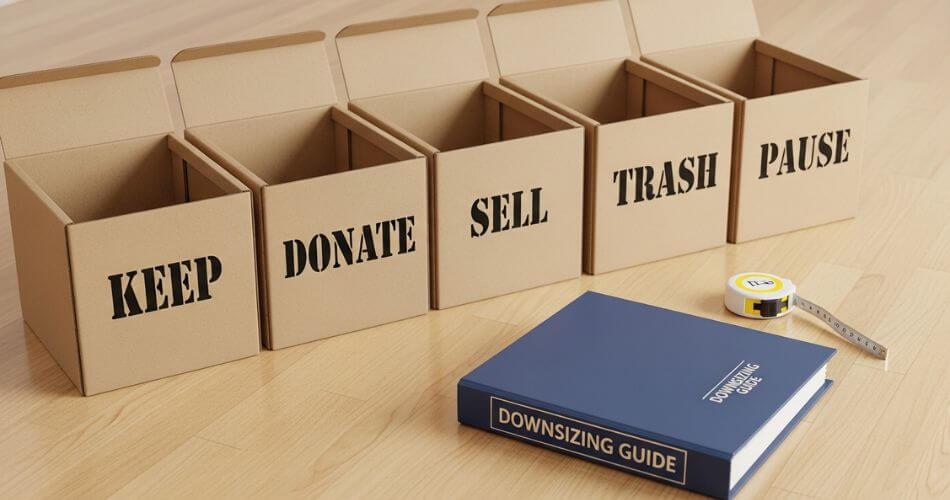
Your First Tasks: The 'Downsizing Binder' & Document Checklist
This week is all about building momentum. We will counter that feeling of paralysis by starting with small, practical tasks that give you an immediate sense of control and accomplishment.
Before we sort any rooms, we get organized.
Create a “Downsizing Binder”: This will be your central command center for the entire move. Get a large binder with dividers.
This file is where you will keep all your checklists, contact numbers for services, receipts, and the important documents you are about to gather.
Gather Your Essential Documents: This is a non-emotional, practical task that creates a wonderful sense of control.
Go through your home and gather all the originals and copies of your key South African documents, placing them in your new binder. This forms your official downsizing document checklist. Key items to locate include:
- Personal IDs (ID Book, Passport, Birth/Marriage Certificates)
- Your original, signed Last Will and Testament
- Financial details (Bank accounts, investment certificates, life policies)
- Property documents (Title Deed, Bond Contract, recent Municipal Account)
- Vehicle registration documents
The 5-Box Sorting System (and the Crucial 'Pause' Box)
A standard “Four-Box Method” can be too rigid and is a known source of decision fatigue. We will use a more flexible “Modified 5-Box Method” that is kinder to your mind and your heart.
Get five large boxes and label them clearly:
- KEEP: These are the non-negotiable items that are essential for daily life and will fit in your new home.
- SELL/CONSIGN: Items with clear monetary value that you are willing to part with.
- DONATE/GIVE: Items in good condition for charity, or that you have designated for specific family members or friends.
- TRASH/RECYCLE: Any items that are broken, expired, or unusable.
- THE “PAUSE” BOX: This is your most important tool for maintaining momentum. When you pick up an item that causes immediate indecision or emotional paralysis, do not agonize over it.
Place it in the “Pause” box and move on. The rule is simple: seal this box at the end of your sorting session and do not revisit it until Week 4.
This disengages the emotion from the physical sorting process, allowing you to keep moving forward.
Your First 'Easy Win': The Laundry or Linen Closet
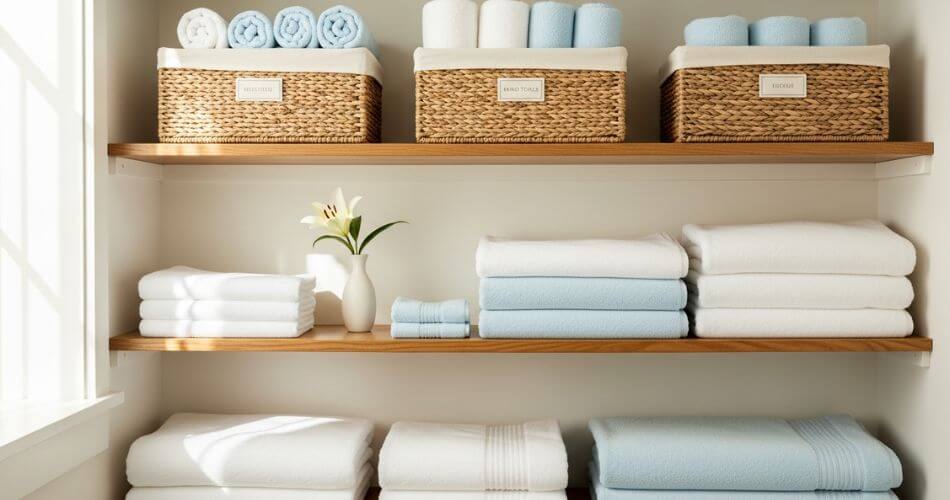
To build momentum, we must start small. It is vital to start in an area with low sentimental attachment to build your confidence. We will not start with photo albums, the office, or the garage.
The ideal starting place is the laundry room or the linen closet. These spaces are often “dumping grounds” for non-sentimental, functional clutter, making them perfect for a quick, satisfying win.
Follow this simple process:
- Empty It Out: Take everything out of one specific section, like the cabinet above the washer. Place all the items in the hallway to create a “blank slate”.
- Clean: Wipe down the now-empty shelves.
- Set Up: Line up your five labeled boxes.
- Sort: Pick up each item once and make an immediate decision. That expired bleach is “Trash”. Those duplicate cleaning brushes are “Donate”. Old towels and blankets can be “Donate” (the Cape of Good Hope SPCA in Grassy Park always appreciates these for animal bedding).
- Complete: Put only the “KEEP” items back in an organized way. Move the “Donate,” “Sell,” and “Trash” boxes to a designated staging area, like the garage. This provides an immediate, visible victory that motivates you for the next task.
Week 1 Logistics: Measuring Your New Space & Finding Local Donation Services
We finish Week 1 with two final planning tasks.
Measure the New Space: Get a floor plan of your new home. Take a measuring tape and measure the new rooms. Then, measure your “must-keep” furniture, like your sofa, beds, and dining table.
This simple step is a game-changer. It transforms the “Keep” decision from a purely emotional one (“But I love this sideboard”) to a practical, non-negotiable one (“It simply will not fit”).
Research Local Donation Services: We need to find out where to donate furniture in Cape Town. The key for you is to find services that collect items, which reduces the logistical burden on you.
Start a list in your binder. Good local options in the Northern Suburbs include Tygerberg Hospice, which has shops in Bellville and will gladly arrange collection of large items like furniture.
The Cape of Good Hope SPCA also offers collection for large items with fair notice. For smaller drop-offs, Ons Winkel has a branch in Brackenfell and is a well-known, trusted local option.
Week 2: Sorting the Main Living Areas
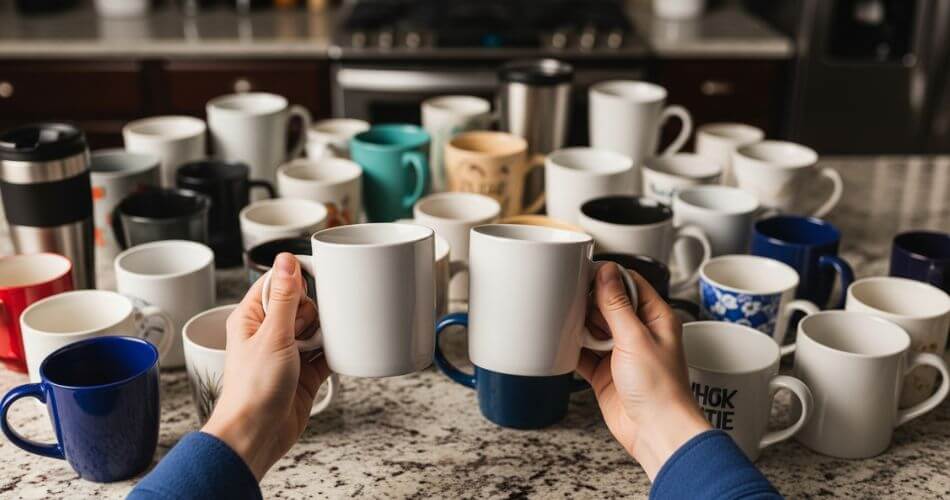
With our system in place and a few small wins under our belt, this week we apply our process to the larger, more frequently used spaces: the kitchen and the living room.
How to Beat 'Decision Fatigue'
This week involves sorting thousands of “functional” items. The primary enemy here is “decision fatigue,” a state of mental exhaustion that drains your energy and leads to poor choices.
Here is how to cope with downsizing overwhelm when sorting:
Reduce Other Decisions: On the days you plan to sort, preserve your mental energy. Reduce trivial choices. Wear a simple “uniform” of comfortable clothes and eat a pre-planned, simple lunch. This frees up your cognitive resources for the real sorting tasks.
Use a Timer: Stick to the short, timed sessions from Week 1. This is not a marathon. Work for 25 minutes, then take a 5-minute break. Acknowledging the completion of one shelf or one cabinet is a tangible win.
Don’t Multi-task: Your only job during a sorting session is to sort. Do not stop to mend a shirt, read a book, or research the value of a vase.
If a new task pops into your head (“I need to buy new shoelaces”), write it on a “To-Do” list in your binder and handle it later. Keeping these “to-dos” in your head drains mental energy.
Overcoming the 'Just in Case' Mindset
For functional items in the kitchen or living room, the anxiety is not “This is sentimental,” but “What if I need this someday?”. This is a fear of future scarcity, and it is very common.
Counter This Fear with Pragmatic Questions:
Ask: “Have I used this in the last year?” If the answer is no, give yourself permission to let it go.
Ask: “If I needed this in the future, could I borrow it, or replace it for under R200?” If the answer is yes, you do not need to pay to move and store it.
Reframe the Process: Remind yourself that you are not just “getting rid of things”. You are curating a lighter, more intentional life that serves your new chapter, not your old one.
Systematic Sort: The Kitchen (Tackling Duplicates)
The kitchen is the primary zone for duplicates. The only way to see the true scale of the problem is to sort by category, not drawer by drawer.
The Category Method: Do not sort one drawer at a time. Instead, pull all items of a single category into one location. For example, gather every single coffee mug, all cooking utensils, or all pots and pans from every corner of your kitchen.
Why This Works: When you see all 40 mugs lined up on the counter, it becomes incredibly easy to choose your 8 favorites and put the rest in the “Donate” box. Seeing 5 can openers and 3 slow cookers side-by-side highlights the redundancy.
Be Realistic About Your New Lifestyle: If you are moving to a smaller home, you will likely not be hosting 30-person dinners. Be honest about this.
Keep your best set of dishes and one complete set of pots. Tackle the pantry and be ruthless with expired food, old spices, and unwanted condiments.
Systematic Sort: The Living Room (Books, Media & Decor)

This area is for your collections: books, media, and decor.
Books: This can be an emotional category. Gather all the books from all the bookshelves in the house into one place. Apply your guiding Döstädning question: “Will my children want this?” or “Will this be a heavy burden for them to dispose of?”.
Create a “core library” list of the 10-20 books you know you will re-read or that are deeply meaningful. Keep those. Be ruthless with outdated materials like 10-year-old travel guides or manuals for technology you no longer own.
Media (CDs, DVDs, VHS Tapes): Ask the key filter question: “Do I still own the player for this?” If you no longer have a VCR or cassette deck, the media is trash.
Keep a small collection of your absolute favorites, and acknowledge that most music and films are now accessible via streaming services.
Decor: These items can border on sentimental. Use your “Pause Box” heavily for any item you are unsure about.
Week 2 Logistics: How to Sell Your Items (The Low-Hassle Way)
For a homeowner over 55, the priority for selling is often safety and convenience, not squeezing every last Rand out of an item. The stress of managing online sales can be overwhelming. We will prioritize local, high-trust options.
Action 1 (Online, with Safety):
For some items, Facebook Marketplace or Gumtree can work. But you must follow this SA-Specific Safety Protocol: For small items, meet buyers in a safe, public place (like the local police station or a shopping center parking lot).
For large furniture pickups, never be alone. Have a family member or friend present. Insist on confirmed EFT payment (visible in your account) or cash before the item is released.
Action 2 (Consignment – Preferred):
This is the “done-for-you” option for good quality furniture. Local services in the Northern Suburbs like Die Handelshuis in Bellville or Chip & Son (serving the Kuils River area) buy and sell quality second-hand and antique furniture.
Action 3 (Auction – High-Value): This is the correct path for genuine antiques, art, or valuable collectibles like coins, jewelry, or war medals.
Contact the Durbanville Auction House, a family-owned business in the Northern Suburbs that accepts these items.
Your Task This Week: Group your “Sell” items and take clear photos. Then, make one call to a consignment dealer (like Die Handelshuis) and one call to an auction house (like Durbanville Auction House) to schedule a valuation. This is a manageable, concrete step.
Week 3: The Emotional Peak – Sentimental Items

This is the most challenging week of the plan. We will be sorting sentimental items and heirlooms. The key here is to give yourself grace, time, and a clear strategy.
Acknowledge Grief & Reframe the Language
Sorting sentimental items is not decluttering; it is a process of reviewing a lifetime of memories, achievements, relationships, and losses. It is normal and necessary to feel grief, nostalgia, and sadness.
The words we use have power. The phrase “getting rid of” is painful. It implies that the associated memories are also being discarded. We must consciously change our language.
Instead of “getting rid of” your mother’s china, ask: “How can we find a new home for this?” or “Who would be blessed by this?”
This empathetic reframe changes the act from one of disposal to one of generosity, legacy, and purpose.
The Core Principle: Keep the Memory, Not the 'Stuff'
This is the core principle for how to sort sentimental items. The memory does not live in the physical item; it lives in you.
Strategy 1: Take Photographs:
Before you let an item go, take a beautiful photograph of it. Create a digital album titled “Family Memories” or “The Story of Our Home”. This honors the item’s story without requiring it to take up physical space.
Strategy 2: Keep One Representative Item:
You do not need the entire collection to hold the memory. Keep one teacup and saucer from the 12-piece set. Keep one special drawing from your child, not all 500.
This single, representative item can then be properly displayed and honored, rather than stored in a box.
How to Sort Old Photographs (The A-B-C Method)
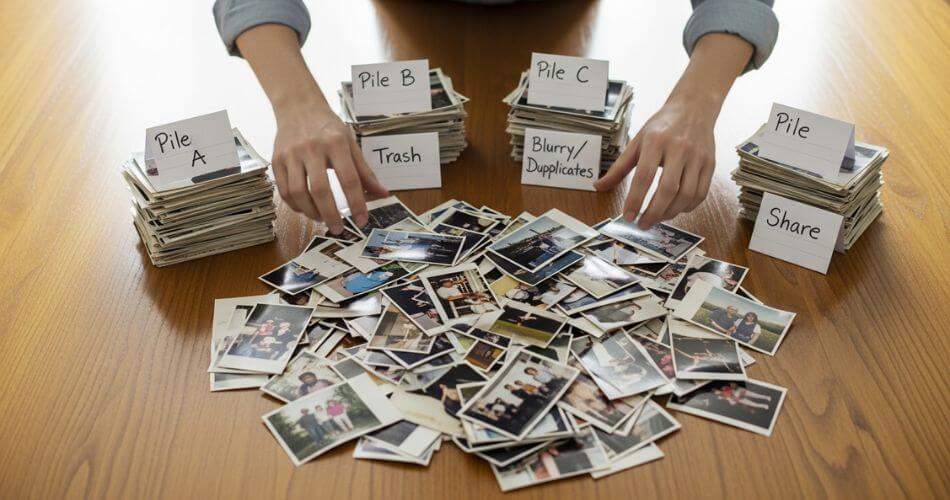
This single task is a notorious project-killer. It can stop a downsizing plan in its tracks. Do not attempt to sort all your photos at once. Work in short, timed bursts.
Step 1: Gather all photo boxes, albums, and loose photos into one location.
Step 2: The “A-B-C” Sort:
- Pile A (The Treasures): The absolute best of the best. Key milestones, cherished loved ones, and high-quality images that tell your story.
- Pile B (The Duplicates & Duds): This is where you will make the most progress. Be ruthless in purging: blurry photos, duplicates, faded shots, unflattering pictures, photos of people you no longer remember, and the 50 nearly-identical photos of the same vacation (keep the best 5).
- Pile C (For Others): Photos that are not your primary memories but belong to someone else (e.g., your son’s school photos, your cousin’s wedding).
Step 3: Consolidate Pile A into one or two new “Keep” photo boxes or albums. Give Pile C to the relevant family members.
Step 4: Throw Pile B away. This is difficult, but it is necessary to move forward.
Managing Heirlooms & Family Dynamics
The process of passing on heirlooms to family can be a gift, preventing conflict down the line.
Strategy 1: “Pass Heirlooms on Early”: Give meaningful items to family members now. This is a wonderful opportunity to share the story behind the item.
It can be a “wonderful… bonding experience” to see your treasured objects settled with loved ones.
Strategy 2: Offer Without Pressure: Be prepared for your adult children to say “no”. They may not want or have space for large, heavy, or style-specific heirlooms.
This is not a rejection of you or your love; it is a practical reality of their own lives. Give them permission to decline without guilt.
Strategy 3: Make Distribution Fair: For items that multiple people may want, set up a simple, fair system. A common method is to create a list of items and have family members take turns choosing.
Week 3 Logistics: Digitizing Memories & Secure Shredding
We will now deal with the items from our sorting.
Digitize the “Keep” Pile: To preserve your “Pile A” photos, your children’s art, and key letters without taking up physical space, digitize them.
You can contact a professional service in Cape Town that specializes in scanning old photos, slides, and negatives.
Services like The Portrait Studio offer high-resolution scanning. This creates a permanent, shareable archive for the whole family.
Securely Destroy the “Shred” Pile: After sorting your office and personal papers, you will have a large “Shred” pile. You cannot place 30 years of personal documents in the municipal recycling.
This is a significant identity theft risk, and proper destruction is a key part of POPI Act compliance. You must book a professional, secure document shredding service.
Local Cape Town services like ShredCo offer on-site mobile shredding. Their truck will come to your home, and you can watch your documents be destroyed at the curb, giving you complete peace of mind.
Week 4: The Final Stretch & Utility Spaces
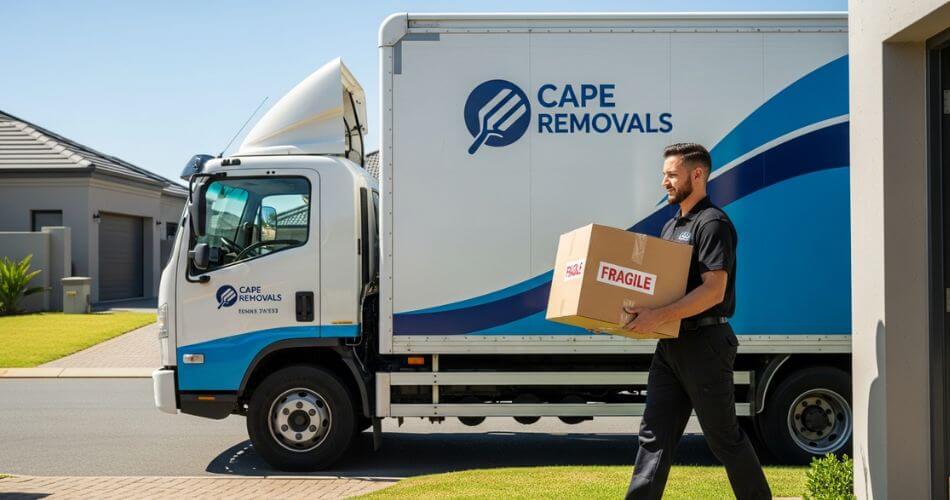
This is the final week. We are clearing the final hurdles and preparing for the physical move itself.
Sorting the Garage: The Final Frontier
The garage or shed is often the most physically demanding sorting space, so it is best to start early in the week. The good news? These spaces are typically the least sentimental, which allows for fast, ruthless decision-making.
The Process: Sort items into logical piles: Tools, Garden, Motoring, Hazardous Waste, and finally, the items from your “Pause Box”.
Be Ruthless: If you are moving to a flat or a smaller complex, you will not need the large lawnmower or a 50kg workbench.
Keep one small, essential toolbox for basic repairs. Donate usable tools, sports equipment, and garden supplies to local community projects.
How to Handle Hazardous Waste in Cape Town (Legally)
This is a critical, non-negotiable task. You cannot legally or safely dispose of chemicals, paint, or e-waste in your municipal bin. You must adhere to the City of Cape Town’s regulations.
Paint: Water-based paint can only go in your general waste bin if it is completely “dried and solidified”. To dry it out, mix it with sand, cement, or cat litter and leave the lid off. Solvent-based or oil-based paint is hazardous waste and must be taken to a hazardous drop-off site.
Chemicals: Pesticides, acids, and old cleaners cannot be poured down the drain. They must be taken to a hazardous waste facility, such as the Vissershok Landfill Site.
Electronics (E-Waste): Do not landfill old computers, printers, or TVs. Take them to a designated e-waste drop-off site. Many retailers like Woolworths and Pick ‘n Pay have collection points for smaller items like batteries and CFL bulbs.
Week 4 Logistics: Booking Movers & Junk Removal
This is the week of execution.
Finalize All Disposal: Call Tygerberg Hospice or St Luke’s Hospice to schedule a final, confirmed collection of all your “Donate” boxes and furniture.
Call the junk removal service you researched in Week 1 (like Cape Core Rubble) to collect the final “Trash” pile from the garage.
Book Reputable Movers: Get three quotes from vetted, local moving companies. It is very important to check that they are insured.
Local vetted services in the Northern Suburbs include Cape Removals (serves Brackenfell), Bellstar Movers (based in Kuils River), and The Mover Guy (based in Kraaifontein).
Once you have your quotes, book the move. A small tip: moving mid-month is often cheaper than at month-end.
Your 'Day 1 Essentials Box'
This is a small step that makes a huge difference on moving day. Pack one box or suitcase labeled “Day 1 Essentials”. This box moves with you in your car, not in the moving truck.
Contents: Pack everything you will need for the first 24 hours in your new home.
This includes: all essential medications, toiletries, phone chargers, a change of clothes, your “Downsizing Binder” (with all its key documents), a kettle, tea/coffee, snacks, and some basic cutlery.
The Final Admin: Transferring Utilities & Changing Your Address
Finally, you must notify all service providers of your new address and move-out date.
City of Cape Town: You must manage your municipal account (for water and rates). The City notes that due to technical issues, users cannot currently update these details via the e-Services profile.
You must contact them directly. You can either visit a municipal Walk-in Centre (there are branches in Bellville and Durbanville) , call them at 0860 103 089 , or email accounts@capetown.gov.za.
On Moving Day: Take final meter readings for both electricity and water. Use your phone to take a time-stamped photo of the meters as proof.
Other Providers: Do not forget to notify your security company (like ADT), Telkom or your ISP, DStv (MultiChoice), your bank, your medical aid, and the SABC (for your TV License) of your address change.
Beyond the Boxes: Embracing Your New, Lighter Life

The boxes are gone, the admin is filed, and the truck has pulled away. Take a deep breath. You have done it.
This process was about so much more than just moving houses. It was about intentionally curating a life that serves you in this new chapter.
Focus on the benefits you have created for yourself: less maintenance, more time and energy, and the deep, lasting peace of mind that comes from having your affairs in order. This is the new, simpler life you have built.
The journey from a home filled with a lifetime of possessions to a lighter, simpler space can feel enormous. But as you have seen, it is not an impossible task. It is a series of small, manageable steps.
By breaking it down into a four-week plan, focusing on one small win at a time, and leading with a philosophy of care, you can turn that feeling of overwhelm into one of action and empowerment.
You have created a manageable downsizing action plan, and you have the tools to execute it with grace.
Feeling overwhelmed by the downsizing process is the single biggest hurdle for most homeowners.
While my expertise is not in decluttering, I am a real estate expert for the Northern Suburbs who has guided hundreds of homeowners through this exact journey.
I understand the pressure you’re feeling, and I know how to create a sales strategy that respects your timeline and removes the stress.
When you are ready to discuss the next step—the successful, top-value sale of your home—contact me for a confidential consultation. Let’s build a plan that gets you to your next chapter with peace of mind.
About the Author
Andre Swart is a respected leader in Brackenfell real estate with over 20 years of results-driven experience. Through his platform, “Andre Swart Inspires,” he moves beyond simple property sales to share the proven mindset, strategies, and habits that build lasting success.
Grounded in integrity, Andre’s mission is to mentor the next generation of top agents and provide homeowners with the trusted guidance they deserve.
